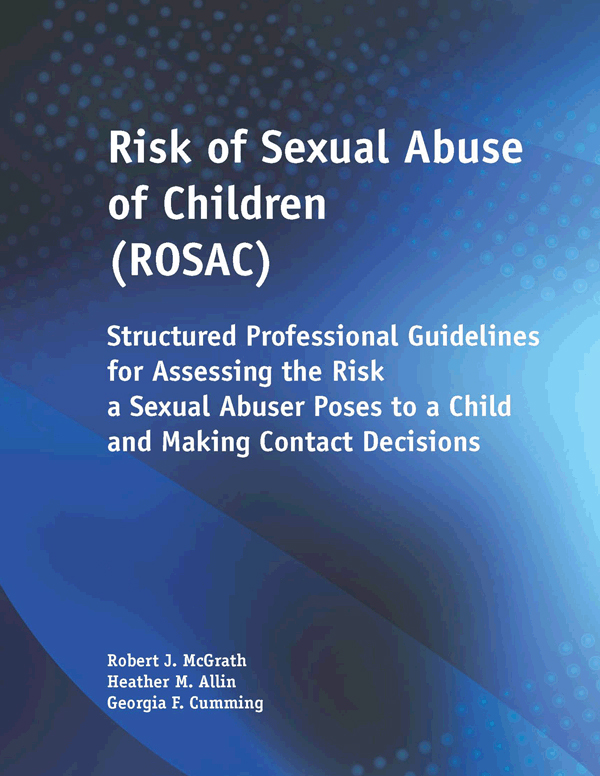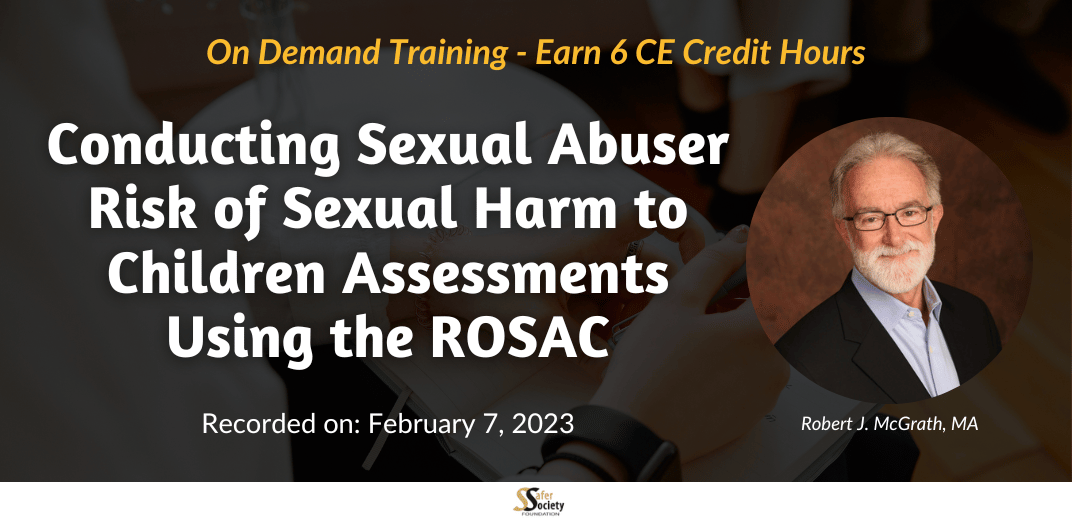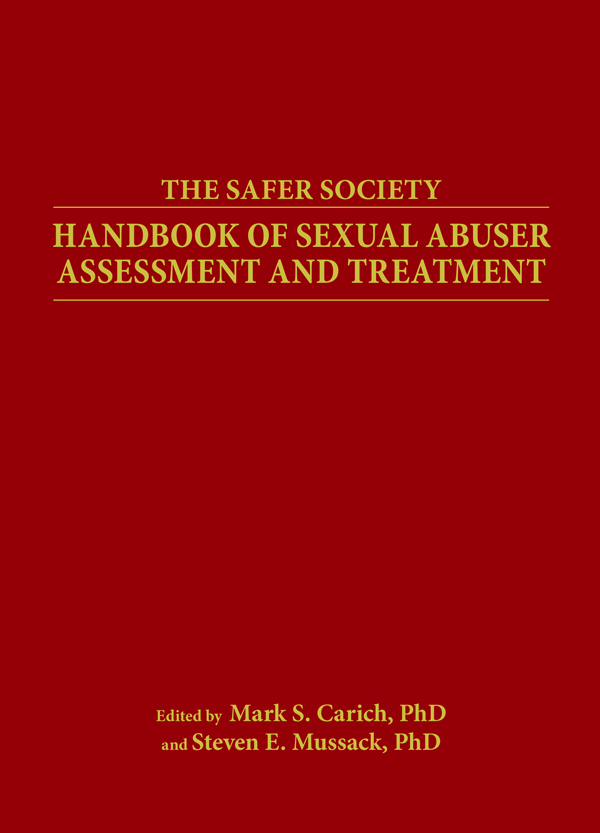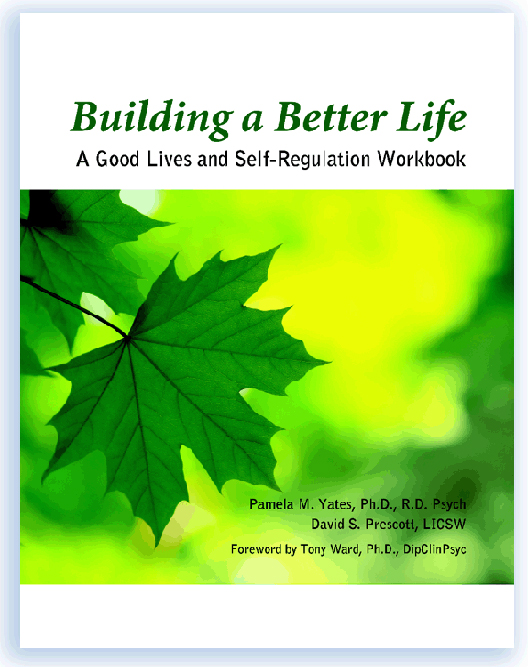Home / Shop / For Case Workers
Risk of Sexual Abuse of Children (ROSAC)

- Description
- Specifications
Risk of Sexual Abuse of Children (ROSAC)
Structured Professional Guideline for Assessing the Risk a Sexual Abuser Poses to a Child and Making Contact Decisions
by Robert J. McGrath, Heather M. Allin & Georgia F. Cumming
The ROSAC is a structured professional guide to help professionals assess the risk an individual convicted of sexual offenses poses to a particular child and under what circumstances the abuser might safely be allowed contact with the child. This evidence-based tool provides a systematic approach to making such difficult decisions that directly impact child safety and family wellbeing.
Rather than relying on subjective judgment alone, the ROSAC manual offers professionals a research-supported framework that guides them through the complex process of evaluating risk factors while considering the unique circumstances of each case. The tool recognizes that these assessments require careful consideration of multiple factors affecting both the adult offender and the child at risk.
The ROSAC attempts to answer the question, “What is the likelihood that this person who previously committed a sexual offense is going to reoffend against a specific child?” ROSAC assessments involve weighing the risk of the child being harmed sexually against the risk of harm that results from of separating the child from an adult to whom the child may be attached as well as the general risk of infringing on the rights of individuals to live their lives without undue government interference.
 Who Should Use the ROSAC
Who Should Use the ROSAC
This assessment tool is designed for use by:
- Child protective services professionals
- Probation and parole officers
- Mental health practitioners
- Victim advocates
When to Use the ROSAC
The ROSAC proves helpful in situations such as these:
- A child protective services (CPS) agency investigates a report that an individual previously substantiated for sexually abusing a child is now living with a family that has children, requiring a risk of sexual harm assessment
- A probation officer must decide whether to grant a probationer's request to live in a home with children, when the probationer was previously convicted of a sexual offense
- A mental health professional conducts risk of sexual harm assessments for CPS agencies, probation and parole departments, and the court
A CPS agency, probation department, mental health professionals, and victim advocates collaborate to determine whether to reunite a family where the father sexually abused one of his children.
How the ROSAC Works
The ROSAC uses a Structured Professional Judgment (SPJ) approach, which research shows is effective for predicting sexual and other violent offending. Unlike actuarial tools that produce numerical scores, the ROSAC guides professionals to use their clinical judgment to weigh important risk and protective factors.
 The assessment consists of 30 risk factors divided into four sections:
The assessment consists of 30 risk factors divided into four sections:
- Individual at risk of sexually abusing - characteristics of the potential offender
- Child at risk - factors that may make certain children more vulnerable (while recognizing children are never responsible for abuse)
- Primary caregiver - characteristics of the child's caregiver, if applicable
- Other considerations - additional factors that impact risk but aren't covered elsewhere
Each factor is coded on a 3-point scale, allowing professionals to document their reasoning and create safety plans when necessary.
The ROSAC is intended for use with adult males who have committed sexually abusive acts on or after their 18th birthday and have current or expected contact with a child age 17 or younger. A responsible party must have reason to believe the individual may pose a risk to sexually abuse the child.
What's Included
The ROSAC Manual provides:
- Step-by-step methodology for making risk of sexual harm decisions
- Clear definitions of key terms and concepts
- Guidance on the structured professional judgment approach
- Worksheets for documenting the decision-making process
- Instructions for coding and interpreting each risk factor
The manual includes downloadable worksheets that can be reprinted at no cost by individuals and organizations who have purchased the manual. Purchasers can also photocopy those pages from the manual. Check the notice on the copyright page for details.
The ROSAC represents a research-supported approach to making these important decisions about child safety and family reunification.
Train with the Author!
Conducting Sexual Abuser Risk of Sexual Harm to Children Assessments Using the ROSAC
This on-demand training reviews the theory and research basis for the ROSAC and focuses on using case studies to assist participants in practicing how to score and use the instrument to make risk determinations and develop safety plans. Click here to learn more.
Full quote from Dr. Leibowitz:
"The ROSAC is an indispensable research-based measure for evaluators, caseworkers, and supervisors for use in complex risk of sexual abuse [harm] cases. It is a structured decision making tool that can significantly advance the way social workers, probation officers, and other professionals think about risk assessment and sexual recidivism in their practice, such that they can effectively engage in safety planning to target known static and dynamic factors. In Vermont, and nationally, the ROSAC is beginning to be used consistently as part of case consultation."
Click here to visit Robert McGrath's website - McGrath Psychological Services, P
ISBN: 978-1-940-234-01-4
75 pages, paper, spiral bound
$34.00
Order# WP170



